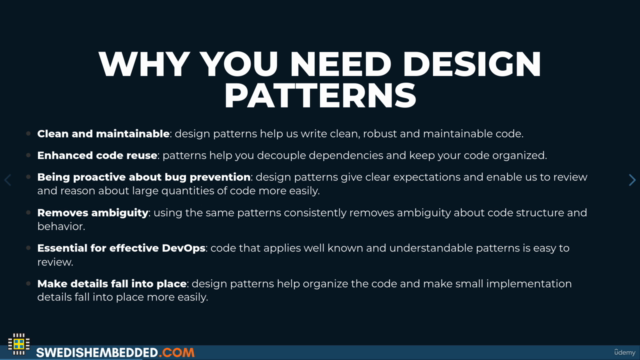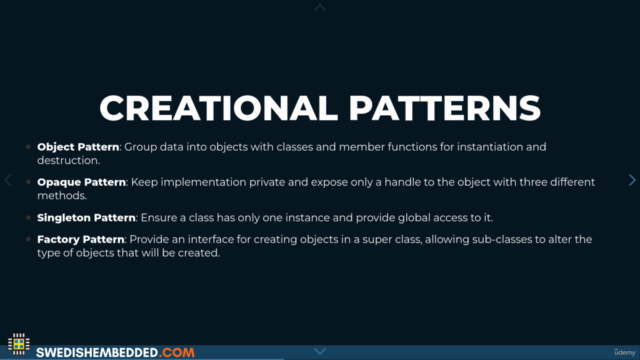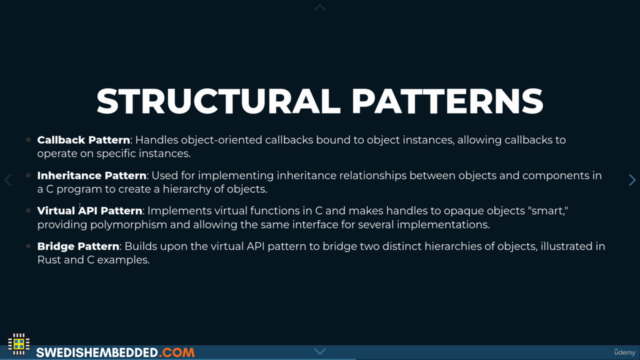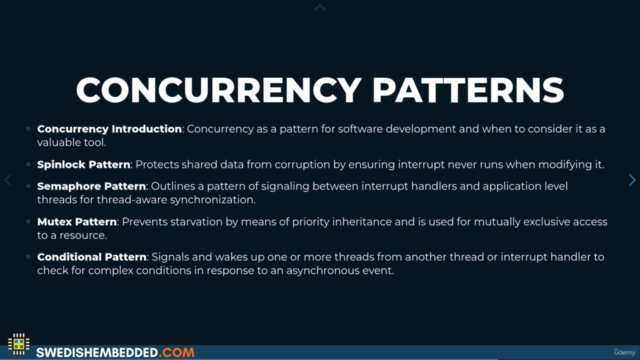Embedded C Programming Design Patterns
Design patterns for creating clean and maintainable firmware code for embedded systems
4.01 (442 reviews)

3,750
students
6 hours
content
Mar 2023
last update
$64.99
regular price
What you will learn
Code readability and maintainability
Great code reuse
A clean software architecture
Easy code review
Screenshots




Related Topics
5161660
udemy ID
2/16/2023
course created date
2/24/2023
course indexed date
Bot
course submited by